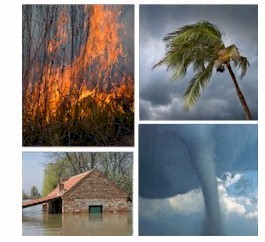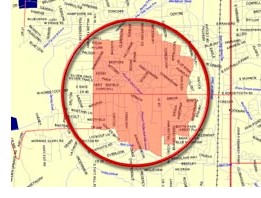|
|
DSC Tech Library
 This section of our technical library presents information and documentation relating to Emergency Broadcasting Systems and Disaster Recovery Applications.
Should an emergency arise in your community, our 911 broadcast service can deliver large volumes of calls quickly using thousands of phone lines simultaneously. In the event of a blizzard, wild fire or devastating flood, your community can be notified quickly given specific instructions if an evacuation is required using our emergency broadcasting service. If a dangerous chemical spill occurs in your community, you can target specific areas to call. If a severe snow storm hits your area, your community can be notified of school closings or event cancellations.
This section of our technical library presents information and documentation relating to Emergency Broadcasting Systems and Disaster Recovery Applications.
Should an emergency arise in your community, our 911 broadcast service can deliver large volumes of calls quickly using thousands of phone lines simultaneously. In the event of a blizzard, wild fire or devastating flood, your community can be notified quickly given specific instructions if an evacuation is required using our emergency broadcasting service. If a dangerous chemical spill occurs in your community, you can target specific areas to call. If a severe snow storm hits your area, your community can be notified of school closings or event cancellations.
The following article relates to emergency broadcasting and how it is used in various communities today. This information was obtained from the internet with attribution to the author and/or community.
Fort Collins, CO - Emergency Auto-Dialer System Project Overview
Project Overview and Goals
 The Fort Collins Flood of July 28, 1997 caused hundreds
of millions of dollars in property damage, and took the lives of five
people. During the post incident analysis several disturbing facts became
clear. The most dangerous flooding took place late at night, after many
people had retired for the evening. It had been raining steadily for quite
some time, so most people's windows were closed, and some had fans or
air conditioning units running. Rescue efforts often consisted of pounding
on people's doors, trying to arouse attention and notify them of the danger.
It became painfully clear that a better method of notifying people of
an imminent emergency was needed, and indeed might have saved some lives.
We realized that although we cannot prevent natural disasters from happening,
we can mitigate the potential outcome by providing our citizens with the
maximum lead time possible, so they can make the best choices to keep
themselves safe.
The Fort Collins Flood of July 28, 1997 caused hundreds
of millions of dollars in property damage, and took the lives of five
people. During the post incident analysis several disturbing facts became
clear. The most dangerous flooding took place late at night, after many
people had retired for the evening. It had been raining steadily for quite
some time, so most people's windows were closed, and some had fans or
air conditioning units running. Rescue efforts often consisted of pounding
on people's doors, trying to arouse attention and notify them of the danger.
It became painfully clear that a better method of notifying people of
an imminent emergency was needed, and indeed might have saved some lives.
We realized that although we cannot prevent natural disasters from happening,
we can mitigate the potential outcome by providing our citizens with the
maximum lead time possible, so they can make the best choices to keep
themselves safe.
The ideal solution would require the use of a notification system that:
- would reach the greatest number of people in the affected area;
- would be effective at all hours of the day and night;
- would be able to reach those inside closed dwellings with high ambient
noise levels;
- would be able to reach those living in the more peripheral areas of
the City;
- would be selective, so that a general panic would not be created;
- would let the people know what the specific problem was, and what
they should do;
- would deliver a consistent message to everyone;
- would be able to reach our hearing impaired community members;
- would not, of itself, generate a glut of 9-1-1 calls, thus overloading
the system;
- would not require additional staffing or excessive time to operate;
- would fit within existing budget constraints.
A committee was formed consisting of Emergency Management
personnel, weather experts, Stormwater personnel, emergency responders,
and citizens of the community. This group analyzed the hazard vulnerability
of Fort Collins and researched available notification methods and their
preliminary costs. A funding source was identified in the form of grants
from the Federal Emergency Management Agency (FEMA).
The group used a matrix of possible scenarios of where
a person might be during an event (i.e. at work, driving their car, at
home with windows closed and TV on, or at home asleep). Various situations
were factored in such as whether a person might be hearing impaired, immobile,
a regular TV watcher, or computer user. Consideration was also given to
the possibility of loss of services during an event, such as loss of power
or loss of telephones.
The consensus of the committee was a combination of four
primary notification systems. These included a local Emergency Radio station,
a system of Stream and Precipitation Gages, an improved TV Cable Emergency
Override System, and an Emergency Auto-Dialing Notification System. The
group felt the multi-level package consisting of these four products had
the best potential to reach the most people during the kinds of events
that most often affect Fort Collins, and could be implemented under the
current budget.
Design Specifications
The heart of the Emergency Auto-Dialer system is computer
software that is able to deliver recorded information via telephone in
the event of an emergency, or potential emergency situation. This is done,
normally, by selecting a geographical area on a computer screen map of
the community. The program then uses the public telephone database and
automatically dials every phone number within that geographical area and
delivers a pre-recorded message. The computer also interfaces with alpha
pager, fax, and TDD/TTY devices (for the hearing impaired).
One of the great advantages of this notification system
over many others is that it has the potential of reaching citizens when
they are at home asleep. It is also fills a need for the hearing impaired,
who can be sent a message on alpha pager or called through TDD/TTY telephones.
It also may reach a segment of our population that doesn’t routinely have
their television or radio on while at home or at work. If the phone line
is busy when the system calls, the call is cycled to the back of the list,
and the system will keep trying to call. It can also leave the message
on an answering machine.
The Auto-Dialer System can also be used to great advantage
for purposes other than emergency evacuations. For example, a community
bulletin regarding a lost child, or a police notification of a potential
hazard can be tailored to target a specific neighborhood. Early notification
during these types of incidents results in many more "eyes" in the community,
looking for the lost child, for example.
Partnerships
City of Fort Collins, Geographical Information Services
GIS Mapping Coordination
Poudre Emergency Communications Center
Police and Notification Coordination
City of Fort Collins, Information Technology Department
Telephone System Coordination
|


 This section of our technical library presents information and documentation relating to
This section of our technical library presents information and documentation relating to  The Fort Collins Flood of July 28, 1997 caused hundreds
of millions of dollars in property damage, and took the lives of five
people. During the post incident analysis several disturbing facts became
clear. The most dangerous flooding took place late at night, after many
people had retired for the evening. It had been raining steadily for quite
some time, so most people's windows were closed, and some had fans or
air conditioning units running. Rescue efforts often consisted of pounding
on people's doors, trying to arouse attention and notify them of the danger.
It became painfully clear that a better method of notifying people of
an imminent emergency was needed, and indeed might have saved some lives.
We realized that although we cannot prevent natural disasters from happening,
we can mitigate the potential outcome by providing our citizens with the
maximum lead time possible, so they can make the best choices to keep
themselves safe.
The Fort Collins Flood of July 28, 1997 caused hundreds
of millions of dollars in property damage, and took the lives of five
people. During the post incident analysis several disturbing facts became
clear. The most dangerous flooding took place late at night, after many
people had retired for the evening. It had been raining steadily for quite
some time, so most people's windows were closed, and some had fans or
air conditioning units running. Rescue efforts often consisted of pounding
on people's doors, trying to arouse attention and notify them of the danger.
It became painfully clear that a better method of notifying people of
an imminent emergency was needed, and indeed might have saved some lives.
We realized that although we cannot prevent natural disasters from happening,
we can mitigate the potential outcome by providing our citizens with the
maximum lead time possible, so they can make the best choices to keep
themselves safe.